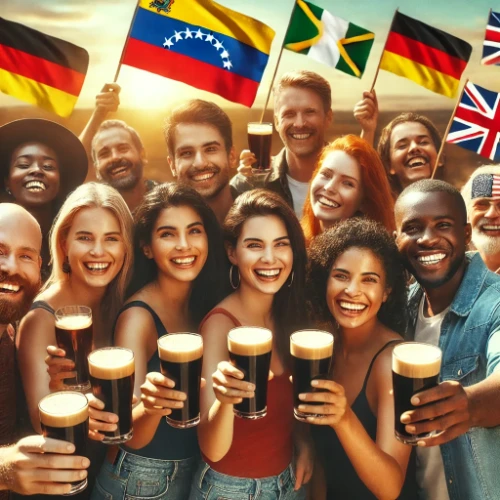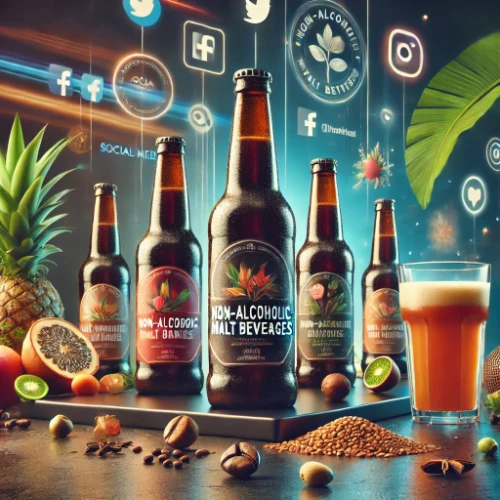Non-Alcoholic Malt Global Traditions highlight how this beverage has transcended borders to become a beloved part of cultures worldwide. From Africa to Latin America and Europe, societies have adapted and embraced non-alcoholic malt, incorporating it into their customs and celebrations. In this article, we explore how non-alcoholic malt unites people globally through shared traditions.
Malt in Africa: A Nutritious and Communal Beverage
In many African countries, people enjoy non-alcoholic malt not just as a drink but as a symbol of community and nutrition. In countries like Nigeria and Ghana, families and friends gather to share malt during special occasions, reinforcing its role in bringing people together.
Malt in Festivities and Family Gatherings
People often serve non-alcoholic malt during major celebrations, including weddings and religious holidays. This tradition emphasizes its role in uniting communities. Offering malt to guests symbolizes hospitality and care, making it an essential element of African customs.
Nutritional Role of Malt
Beyond its cultural significance, many communities appreciate non-alcoholic malt for its nutritional value. In regions where access to nutrient-rich foods is limited, malt provides a reliable source of B vitamins, antioxidants, and minerals. Families frequently include malt in balanced diets, boosting their daily nutrition.
Malt in Latin America: A Family Tradition
Latin American households have also embraced non-alcoholic malt, particularly in countries like Venezuela, Puerto Rico, and the Dominican Republic. Both children and adults cherish this beverage as part of their family traditions.
Malt as a Family Beverage
Generations in Latin America have grown up enjoying the sweet taste of malt, which often accompanies meals or serves as a refreshing snack. Its presence at family tables reflects its cultural importance.
Malt in Traditional Desserts
Non-alcoholic malt also enhances the flavor of traditional Latin American desserts, including flans and cakes. Families frequently use malt to add a unique, nutritious twist to recipes, creating dishes filled with cherished memories.
Malt in Europe: A Connection to History and Wellness
In Europe, the brewing traditions of countries like Germany and the UK gave birth to non-alcoholic malt. Initially created as a healthier alternative to beer, malt quickly gained popularity for its versatility and nutritional benefits.
Origins in Malt Beer
Brewers in Europe traditionally crafted malt beer as a healthy, alcohol-free drink that families could enjoy together. Over time, this beverage evolved into the non-alcoholic malt drinks we know today.
Malt and Wellness in European Culture
Today, non-alcoholic malt appeals to wellness-conscious consumers in Europe. Many people purchase malt beverages from organic stores or local markets, appreciating their natural ingredients and health benefits.
The Global Expansion of Non-Alcoholic Malt
Beyond its origins, non-alcoholic malt has gained popularity in regions such as Asia, the Middle East, and North America.
Adaptation to New Markets
In Asia, non-alcoholic malt now features local flavors that appeal to diverse tastes. Its versatility allows it to integrate seamlessly into new cultures while maintaining its nutritious appeal.
Malt in the Modern World
As global demand for alcohol-free and healthy beverages rises, non-alcoholic malt continues to evolve. This drink blends modern trends with traditional roots, ensuring its position as a cherished global beverage.
A Global Toast to Non-Alcoholic Malt
Non-alcoholic malt goes beyond being a beverage; it acts as a cultural bridge connecting people across continents. Whether you enjoy it during an African celebration, a Latin American family meal, or a European market visit, non-alcoholic malt remains a meaningful part of daily life. Exploring its history and global influence reveals its enduring impact.
Related Links for Malt Fans
- Rise of Malt Drinks in Africa
Explore how malt drinks have become a cultural and social staple across African communities. - Non-Alcoholic Malt in the Caribbean: A Sweet Heritage
Learn how malt drinks like Maltin Polar are cherished in the Caribbean for their rich flavor and cultural significance. - Non-Alcoholic Malt in Europe: A Blend of Tradition and Modernity
Dive into Europe’s brewing heritage and the role of malt beverages in modern times. - Laško Dark Malt Lemon Rosehip: Slovenia’s Refreshing Tradition
Discover this Slovenian gem that adds a refreshing twist to traditional malt drinks with lemon and rosehip. - Non-Alcoholic Malt in the Dominican Republic: A Smooth Tradition
Discover how malt beverages like Malta Morena have become a beloved part of Dominican culture.




